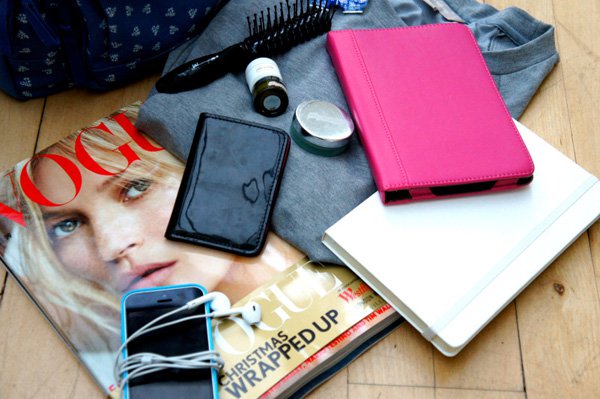A Complete Guide to A/B Testing for a Mobile App

The adoption of apps has spurred on an unprecedented scale with the rise of mobile technology. While 56 million apps were downloaded in 2013, the number is expected to quadruple, according to experts, by 2017. Apps have been changing and evolving over their rather short history. There has been a shift from the “pay to play” model to models that focus more on free applications with in-app monetization. The focus, nowadays, is also more on indirect forms of compensations like loyalty, user engagement, brand recognition, etc.
Having said that, there still is a necessity to prove “Return on Investment” from mobile applications. This, on its own, can be hugely difficult. With the innumerable competing apps, it is an insurmountable hurdle just to stand out from the crowd.
However, thankfully, there is an effective solution available for app developers, i.e. “Testing”.
How to A/B Test for your Apps:
1. Getting On with Segments: It is advisable to be systematic and divide one’s visitors into various categories on the basis of various criteria like gender, age, and behavioral preferences. There are a number of different factors to be considered, such as the usage of desktop users as against the mobile users, the difference in the organic traffic as to the email one, and the pattern of returning users as compared to new users. There might be discrepancies in the data, if all the users are accounted in the same bracket. The results, however, get remarkable when one can pinpoint the aspects that are going to be perfect for the users.
This method is a good resource for one’s time and money as one gets a clear idea about the segments that need more attention and skill. For instance, one must have the idea that Facebook advertisements can pull more downloads. However, in reality, downloads resulting from organic searches on the app store convert into more regular and loyal users.
2. Being Advanced: Detailed data is gradually becoming a vital requirement for savvy marketers. It is no big deal to spend on marketing, these days. In fact, professional marketing teams have a standard profile of “data analyst” in their organizations who subsequently sets out the filters. The complicated the data, the higher the time spent on analysis, but there can be no complain as this is the ideal approach of getting all the why-s and what-s regarding the user behavior answered.
3. Going for A/B Testing Twice: Although A/B tests aresupposed towork on the parallel lines of scientific experiments, there are possibilities of encountering fallacies in these tests as laboratories are not the areas of work.
These flaws can question the validity and reality in cases where:
- The sample size of test was not adequate
- The duration of the test is not long
- Specific external factors cannot be regarded as constants
These give rise to the illusory outcomes in A/B tests. This is why it is suggested to do A/B testing twice. One should jot down the results of the first round and then go for the second round. If the results of the first test seem doubtful, the results of the second test will validate it through the emphatic differences. However, if the uplift is valid, one should still go for the second round for witnessing the uplift again. Although, this is also not a foolproof method, it proves to be of immense help.
4. Going for Long: If and when the results seem to doubt the reliability, it is advisable to run the tests for a lengthier period. Some experts recommend running the tests till the time thousands of conversions call-to-actions have got recorded. However, numbers are not the only deciding factors. The time period of the test also matters as it should be lengthy enough to thoroughly track the changes on the site.
Variation patterns during weekends and weekdays, day and night, end of the month v/s the start of the month should be looked out for. Such variations are excellent for the data. Few cycles of variations should be attempted to be allowed, as it provides normalcy to the data.
5. Choosing the Tool: There are a number of tools of A/B usability testing. These tools have more or less the same characteristics. Thus, the tool that has the best features and suits the pocket should be chosen.
The Tool Kit Comprises of Tools like:
Taplytics (Paid or Free): This is a must-have tool. It allows one to perform live changes whether or not they have app store updates. This tool is immensely helpful, considering the fact that a digital platform is not particularly smooth in going about rapid iterations.
Arise (Paid or Free): Arise consists of all general A/B testing characteristics. One can run an experiment with it, including a total sample size or just a segment of users. However, using Arise is not an option, if one does not have a technical department at their disposal. This tool works well for developers. Even the fundamental stuff cannot be done with Arise, without coding.
6. Testing One Thing at a Time: Each A/B test should be testing one single variable at a time. If multiple variables are tested in a single test, one would not know which variable has counted for the change. One needs to run separate tests for each change they want to try out, in order to test multiple variables.
A/B testing for mobile apps helps in better customer engagement. This helps in extracting more out of the interactions as one gets to test the critical elements of their app. The new automated A/B testing tools for mobile apps have added a bigger dimension to this interesting landscape of mobile app A/B testing.
The guide elaborated above is more or less a complete guide to A/B testing for mobile apps.